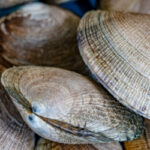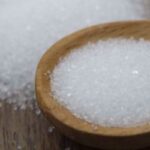
The labeling of the name and place of origin of marine products has been taken up as a topic in recent years. In Japan, the labeling of such names is required to be made in accordance with the “The guidelines for the legal product names of seafood”. In other countries what kind of rules are used to make such labeling then? Let us take a look at the cases of the EU, the US, Canada, and Australia/New Zealand.
“The guidelines for the legal product names of seafood” (Japan)
In Japan, the standard Japanese names for fish and shellfish are based on the “The guidelines for the legal product names of seafood” (Attachment, Food Labeling Standards Q&A) in principle. However, if there is a more widely used name for particular species, this name may be used in order to avoid confusion among consumers with the use of unfamiliar standard Japanese names, etc. “(Appended Table 1)” of the guidelines has listed examples of alternative common names and corresponding scientific names in addition to the “Standard Japanese names” of fish and shellfish.
The scientific names listed with the standard Japanese names can be referred to in determining the labeling name of the marine product, as well as in determining a name that is generally understood for species that does not have standard Japanese names, such as exotic species, together with the name in the country of origin, etc.
A pocket guide to the EU’s new fish and aquaculture consumer labels(EU)
In the EU, the Pocket Guide with the above title issued by the European Commission (see the link below*) specifies the labeling method of marine products. The contents are largely divided into “Unprocessed and certain processed fishery and aquaculture products” and “Other processed fishery and aquaculture products”. Both categories are obliged to indicate their names (names stipulated by acts and regulations as well as names customarily used and general names used for distribution). For the former category, it must be accompanied by their scientific names.
[The former is called “Commercial designation” and the latter is called “Name of the food” respectively for their general names”.]
*A pocket guide to the EU’s new fish and aquaculture consumer labels (European Commission)
The rationale for the above pocket guide comes from the following information by the European Commission.
Commercial and scientific name of the species
Excerpt: Commercial and scientific name of the species (European Commission)
Each EU country draws up and publishes a list of the commercial designations accepted in its territory, including accepted local or regional names.
Scientific names can be confirmed from the following page by the European Commission. By entering Commercial designation, a name of a marine product to be sold, you can search for its scientific name corresponding to that name, which is also linked to the name in the language of each EU member country.
Commercial designations of fishery and aquaculture products (European Commission)
The above search results obtained are in English, but you can refer to the list of Commercial designation/scientific names in European languages, including English, by clicking the following link.
Commercial designations of fishery and aquaculture products: Language (European Commission)
The Seafood List (USA)
In the US, The Seafood List by the Food and Drug Administration(FDA) indicates the “Acceptable Market Name” (a name accepted by FDA as not to be mistaken for other types of seafood for labeling), “Common Name” (a name used by ichthyologist and fisheries experts to identify the type of seafood), and the scientific name of each seafood product.
According to the explanation on this site and the following site, basically “Acceptable Market Name” is indicated, but there are some types of marine products that use “Common Name” as their name. The scientific name itself can be labeled only as reference information to confirm that the labeled name is appropriate, and is not required to be labeled as in the EU.
Guidance for Industry: The Seafood List (FDA)
CFIA Fish List (Canada)
The Canadian Food Inspection Agency (CFIA) lists common names for each scientific name in English / French in the CIFA Fish List and recommends that these names be indicated. Names not on this list may be indicated as far as an inspection is conducted to ensure that they do not lead to false or misleading labeling.
Please refer to the following site.
Food Standards Australia New Zealand (FSANZ)
Food Standards Code by Food Standards Australia New Zealand (FSANZ) does not define names for fish.
However, the seafood industry in Australia has worked with Standards Australia, the non-government, not-for-profit standards organisation, to develop an Australian Fish Names Standard which provides guidance on standard fish names to be used.
For New Zealand, the Ministry for Primary Industries (MPI) website provides Maori names and scientific names for each fish species.
According to the FSANZ website, there are a free call of consulting services for Australia and New Zealand respectively in the case (from the FSANZ website)
“Sometimes fish may be incorrectly identified at capture or wholesale, and the mistake carries on through the supply chain to consumers. To ensure you’re getting what you paid for, find a reputable fishmonger/restaurant. If you’re concerned that fish may be mislabelled, then contact the supplier in the first instance. If you are dissatisfied with the explanation or response…”. For more details, please check the link below.
The above is a review of cases in the EU, the US, Canada, and Australia/New Zealand regarding the labeling of names of marine products. I believe that it is a common theme in all countries to label fish and shellfish with correct and easy-to-understand names to avoid misunderstanding when similar or identical names are associated with multiple species. We hope that this information will be of some help to those who handle marine products in their import and export processes.
Share/Like/Follow:
Newsletter Signup
We issue monthly e-newsletters, which provide you with the latest updates on food labeling/regulations in Japan.
If you want to make sure to not miss any issue, please click below.
Related Service
Research Services on Ingredients & Food Labeling -For the Japanese Market-
We verify the conformity of ingredients and additives with the standards for use in Japan based on specifications such as formulation lists. We also verify the conformity of the proposed labeling of ingredient names, nutrients, etc. with the labeling standards based on specifications such as formulation lists.

Label bank Co., Ltd. Regulatory inspections and Consulting Research staff
Born in Japan. With many years of experience in the additives (formulation) business, his work focuses on additives verification, as well as ensuring the consistency between the technical information in English and Japanese. He also acts as a seminar lecturer on topics related to the standards of use of ingredients.
[Lecture/Seminar]
- “Regulatory Requirements of Food Ingredients/Additives Used in Japan” (ChemLinked: REACH24H Consulting Group/Webinar) Oct. 2020





